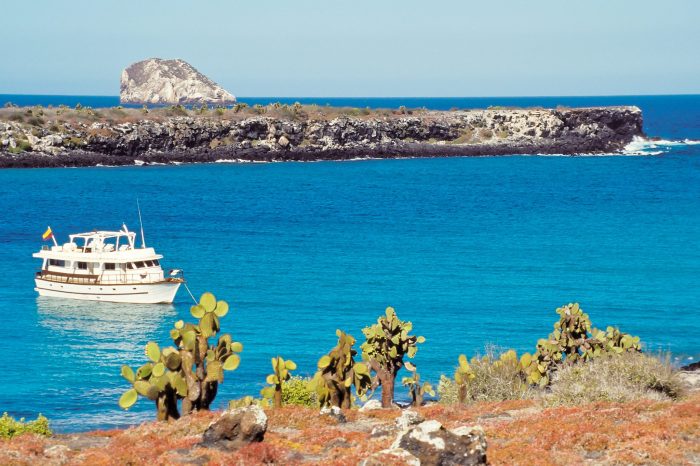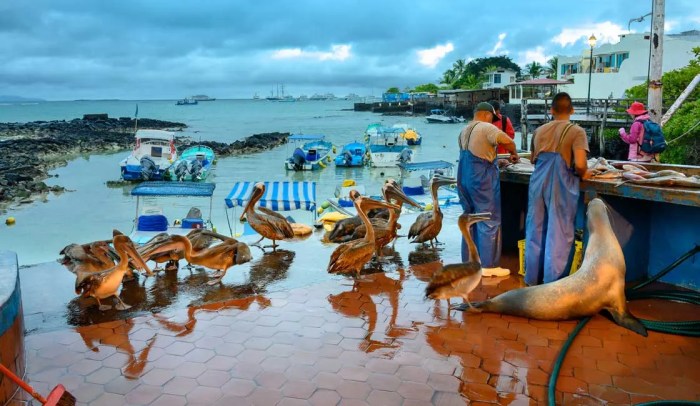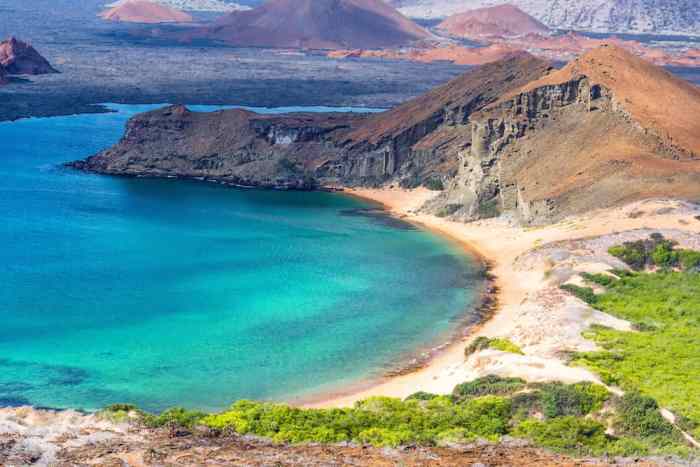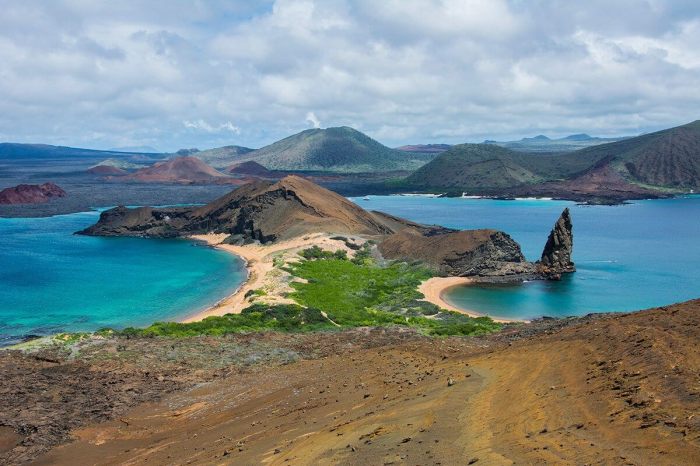Muchas personas visitan las islas galápagos para ver to see – The Galápagos Islands, a unique archipelago in the Pacific Ocean, attract countless visitors eager to witness the extraordinary biodiversity and natural beauty that make this destination a haven for nature enthusiasts and travelers seeking adventure.
From iconic species to breathtaking landscapes, the Galápagos offers an unparalleled opportunity to delve into the wonders of the natural world, leaving an unforgettable mark on every visitor.
Exploring the Unique Biodiversity of the Galápagos Islands
The Galápagos Islands are renowned for their unparalleled biodiversity, showcasing a fascinating array of flora and fauna that have evolved in isolation over millions of years. This unique ecosystem is home to numerous endemic species, including the iconic giant tortoises, marine iguanas, and Darwin’s finches.
Each species exhibits remarkable adaptations that allow them to thrive in this diverse and challenging environment.
Flora and Fauna of the Galápagos
The Galápagos Islands are characterized by a wide range of habitats, from arid coastal regions to lush highlands. This diversity supports a multitude of plant and animal species. The islands are home to over 600 plant species, many of which are endemic to the archipelago.
These plants have evolved to withstand the harsh conditions, including limited water availability and high levels of salinity.The Galápagos Islands are also home to a diverse array of marine life. The surrounding waters are rich in nutrients, attracting a variety of fish, sharks, rays, and marine mammals.
The islands are particularly famous for their marine iguanas, which are the only species of lizard that feeds exclusively on algae.
Conservation Efforts
The unique biodiversity of the Galápagos Islands faces numerous threats, including invasive species, climate change, and tourism. Conservation efforts are essential to protect this fragile ecosystem. The Galápagos National Park was established in 1959 to safeguard the islands’ biodiversity and promote sustainable tourism.
Ongoing conservation initiatives include habitat restoration, invasive species management, and education programs.
Uncovering the History and Human Impact on the Galápagos

The Galápagos Islands have a rich history that has shaped their present-day environment. Human exploration of the islands began in the 16th century, and the islands were later used as a penal colony by the Ecuadorian government.
Tourism and Scientific Research
Tourism has played a significant role in the history of the Galápagos Islands. In the 20th century, the islands became a popular destination for scientists and tourists, drawn by their unique biodiversity and the opportunity to observe wildlife in its natural habitat.
However, tourism can also have negative impacts on the environment, including habitat degradation and disturbance of wildlife.Scientific research has also had a profound impact on the Galápagos Islands. Charles Darwin’s visit to the islands in 1835 was pivotal in the development of his theory of evolution.
Since then, the Galápagos have been a natural laboratory for scientists studying evolution, ecology, and conservation.
Managing Human Impacts
The increasing number of tourists and scientists visiting the Galápagos Islands has led to concerns about the potential impact on the environment. Measures have been taken to manage and mitigate these impacts, including the establishment of protected areas, visitor regulations, and education programs.
The Role of Tourism in the Galápagos Economy

Tourism is a major economic driver for the Galápagos Islands. The islands receive over 200,000 visitors each year, who contribute significantly to the local economy. Tourism provides employment opportunities and supports local businesses, such as hotels, restaurants, and tour operators.
Challenges and Opportunities
While tourism brings economic benefits, it also presents challenges for the Galápagos Islands. The influx of visitors can strain infrastructure and resources, and can lead to environmental degradation. Sustainable tourism practices are essential to balance the economic benefits of tourism with the need to protect the environment.
Responsible Tourism Initiatives
Responsible tourism initiatives aim to minimize the negative impacts of tourism on the Galápagos Islands. These initiatives include:
- Limiting the number of visitors to the islands
- Establishing designated visitor areas
- Educating tourists about responsible behavior
Conservation and Sustainability in the Galápagos

Conservation efforts are essential to protect the unique biodiversity of the Galápagos Islands. The Galápagos National Park and other conservation organizations are working to preserve the islands’ habitats, restore degraded areas, and manage invasive species.
Habitat Restoration and Invasive Species Management
Habitat restoration involves restoring degraded areas to their natural state. This can include replanting native vegetation and removing invasive species. Invasive species are non-native species that have been introduced to the islands and can outcompete native species for resources.
Education and Outreach
Education programs play a vital role in promoting conservation in the Galápagos Islands. These programs aim to raise awareness about the importance of protecting the islands’ biodiversity and to encourage responsible behavior among visitors and local communities.
Scientific Research and Discoveries in the Galápagos: Muchas Personas Visitan Las Islas Galápagos Para Ver To See

The Galápagos Islands have been a natural laboratory for scientific research for over a century. Charles Darwin’s observations on the islands were instrumental in the development of his theory of evolution. Since then, scientists have continued to study the Galápagos Islands, making important discoveries about evolution, ecology, and conservation.
Charles Darwin and the Theory of Evolution, Muchas personas visitan las islas galápagos para ver to see
Charles Darwin’s visit to the Galápagos Islands in 1835 was a turning point in the history of science. His observations of the diversity of life on the islands, particularly the different species of finches, led him to develop his theory of evolution by natural selection.
Recent Scientific Discoveries
Recent scientific discoveries in the Galápagos Islands include:
- The discovery of new species, such as the Floreana mockingbird
- Insights into the evolution of marine iguanas
- Advances in understanding the role of climate change in shaping the islands’ ecosystem
Common Queries
What makes the Galápagos Islands a unique destination?
The Galápagos Islands are renowned for their diverse and endemic species, including giant tortoises, marine iguanas, and a variety of bird species found nowhere else on the planet.
What are some of the conservation efforts in place to protect the Galápagos ecosystem?
Conservation efforts in the Galápagos include habitat restoration, invasive species management, and educational programs aimed at promoting sustainable practices and protecting the delicate balance of the ecosystem.
How can visitors contribute to the conservation of the Galápagos Islands?
Visitors can contribute to conservation by following responsible tourism guidelines, such as staying on designated trails, respecting wildlife, and supporting local businesses that prioritize sustainability.